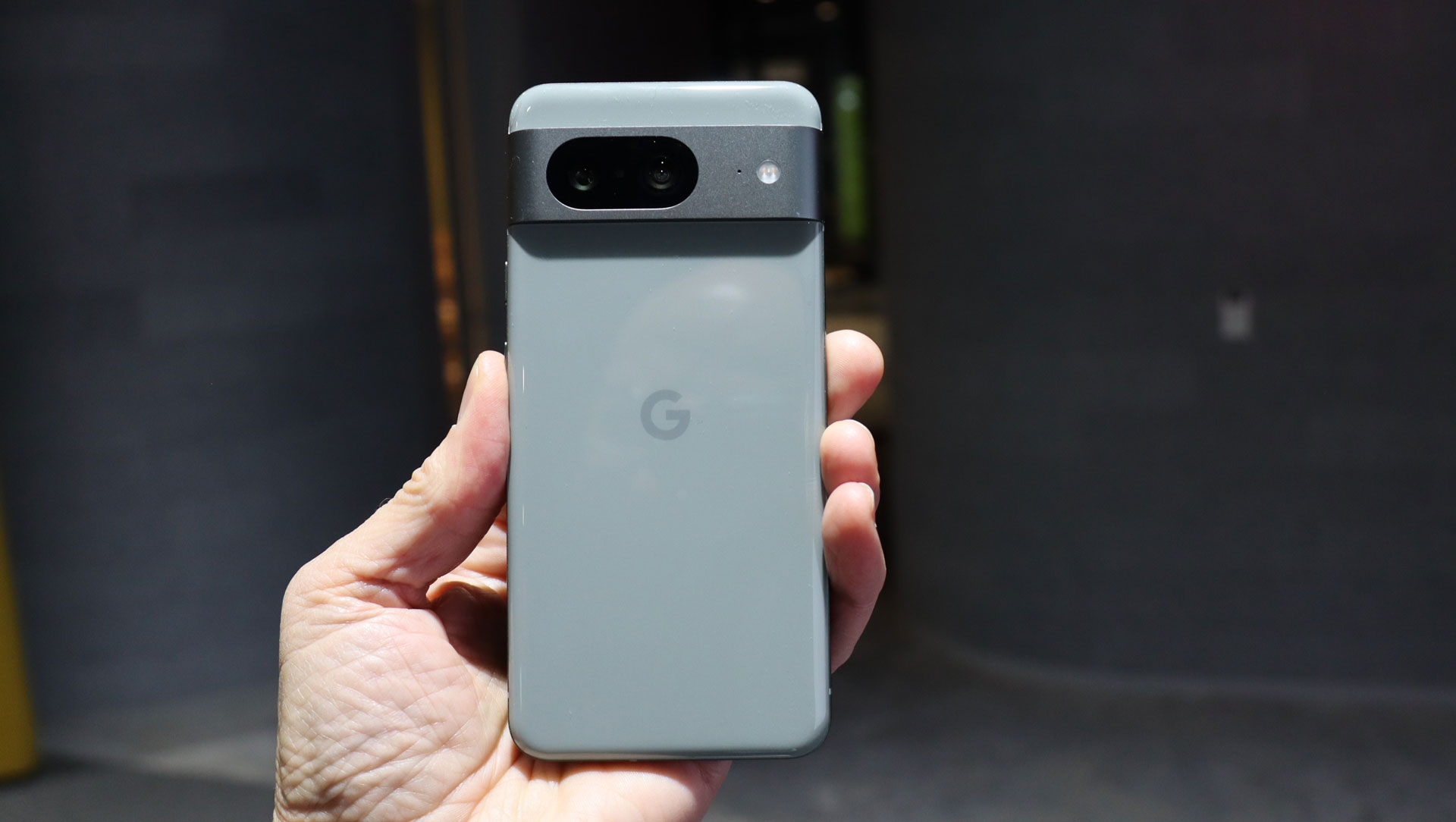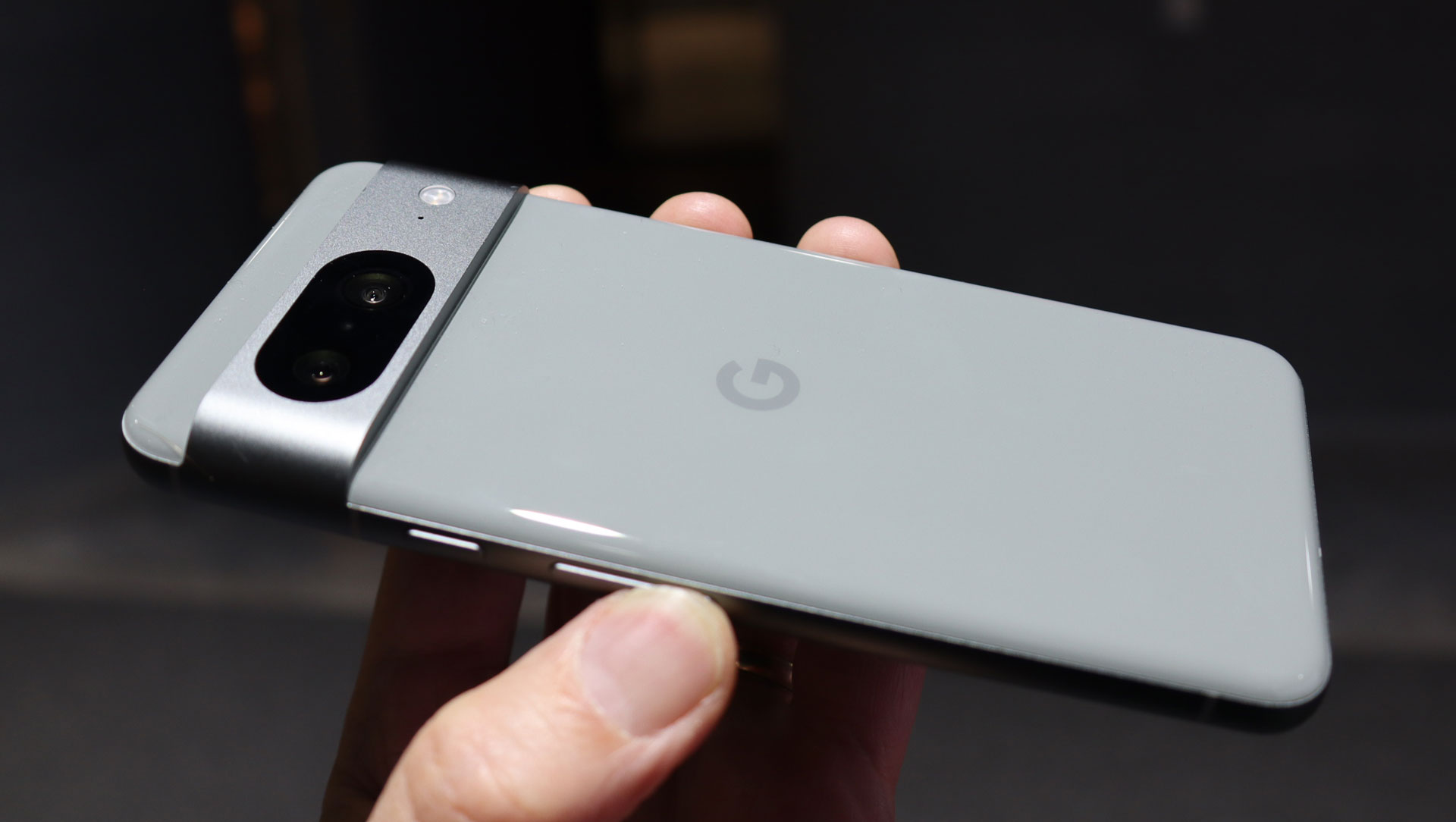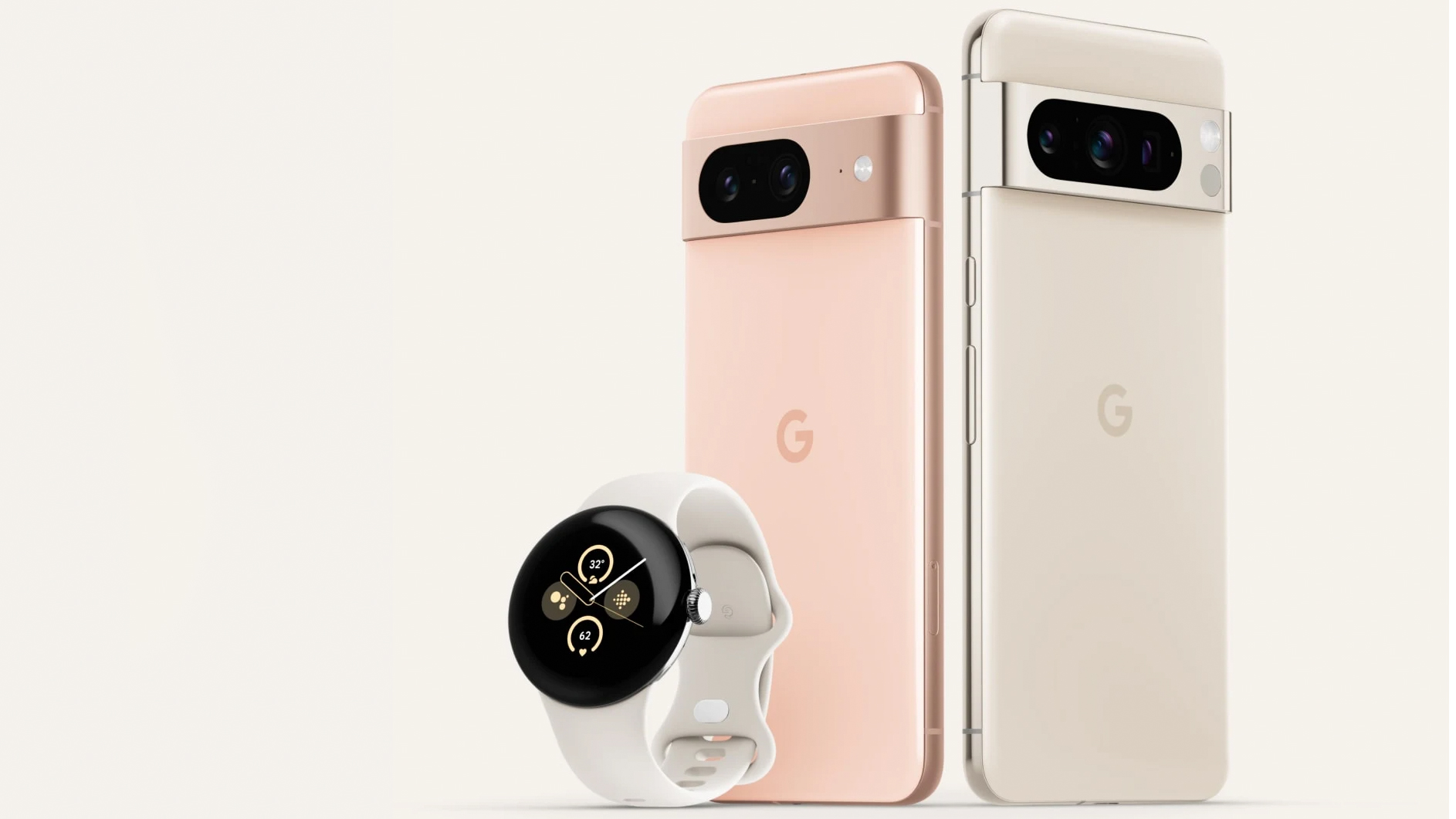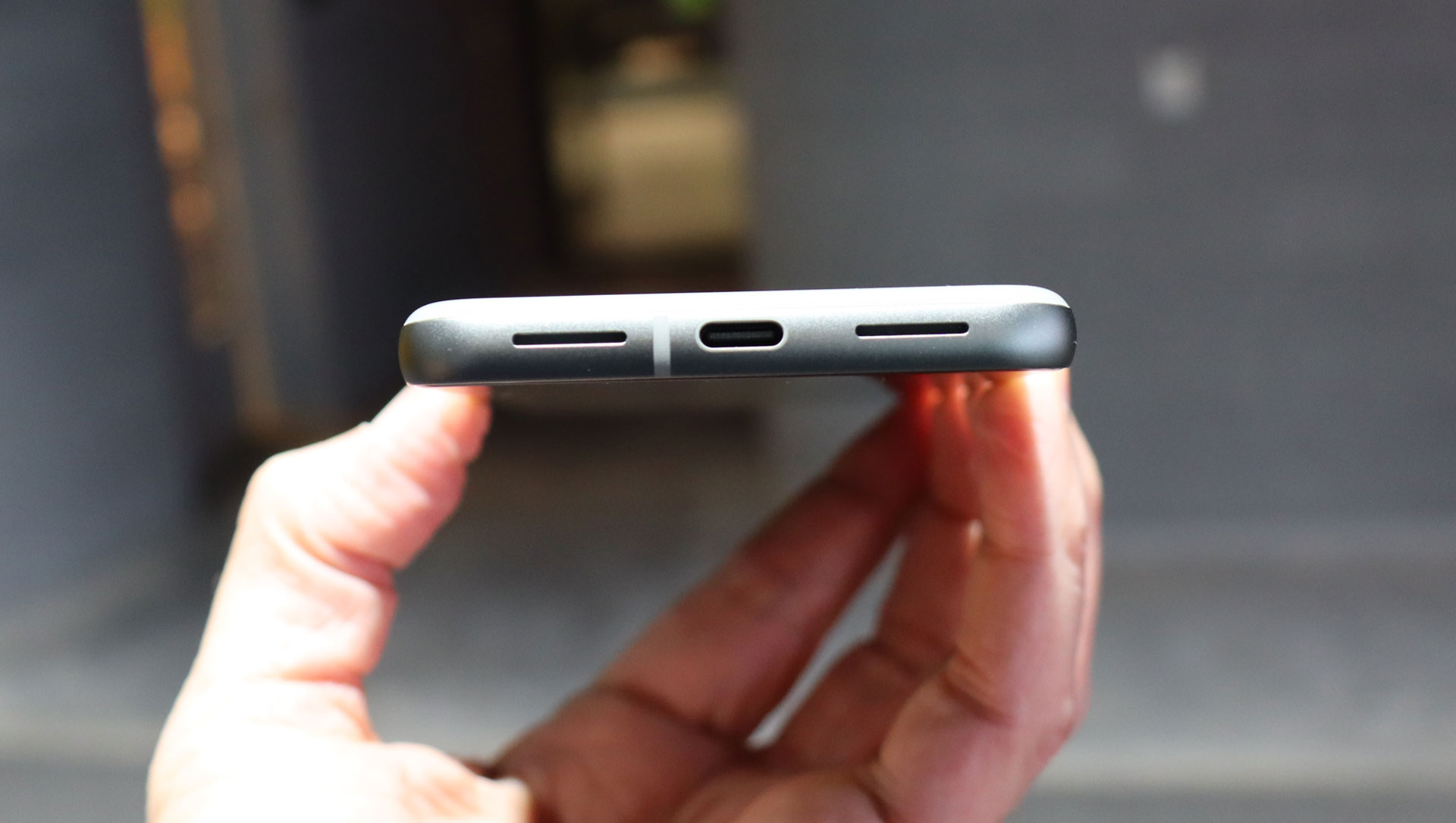Google Pixel 8: price, features, cameras, and everything you need to know
Could this be the perfect Pixel?

It’s been a busy year for phones, and as far as big launches go, the Google Pixel 8 and Google Pixel 8 Pro could be the final two names on the calendar. But if so, they’re a good note to end on, because Google’s newest handsets look set to rival the very best phones around.
These two top mobiles were officially unveiled at Google's latest Made by Google event – head over to our Google event live blog for a look at what else was announced – but it’s the standard Google Pixel 8 that we’ll be focusing on in this article. So, if you want to learn everything there is to know about the Pixel 8, you’re in the right place.
Below, you’ll find details on the phone's cameras, chipset, battery, design, screen, price, and more. We've also included a handy specs table to help you compare the key features of the Pixel 8 to those of its more premium sibling, the Pixel 8 Pro.
After putting the Pixel 8 through its paces we have a conclusion on whether it's worth your attention, so check out our full Google Pixel 8 review. If you are curious about its larger sibling, then check out our Google Pixel 8 Pro review for a comprehensive look at how that flagship phone did in our testing.
Google Pixel 8 cheat sheet
- New Tensor G3 chipset offering more power than ever in a Pixel phone.
- A higher 120Hz refresh rate, up from 90Hz on the Pixel 7.
- A high peak brightness of 2,000 nits, beating last year’s model.
- Upgraded cameras offering better low light performance and new modes.
- Seven years of updates, which is more than any other brand offers.
- A refined design that’s smaller and lighter than before.
- Starts at $699 / £699 / AU$1,199 for 128GB of storage, tops out at 256GB.
- Pre-orders are live now and it ships on October 12.
Model comparison
As well as the Pixel 8, Google has also launched the Pixel 8 Pro. Here’s how the two phones compare.
| Google Pixel 8 | Google Pixel 8 Pro | |
|---|---|---|
| Dimensions: | 150.5 x 70.8 x 8.9mm | 162.6 x 76.5 x 8.8mm |
| Weight: | 187g | 213g |
| Display: | 6.2-inch Full HD+ (1080 x 2400) 60Hz to 120Hz 'Actua' OLED | 6.7-inch 1344 x 2992 adaptive 1Hz to 120Hz 'Super Actua' LTPO OLED |
| Chipset: | Google Tensor G3 | Google Tensor G3 |
| RAM: | 8GB (LPDDR5X) | 12GB (LPDDR5X) |
| Storage: | 128GB, 256GB (UFS 3.1) | 128GB, 256GB, 512GB, 1TB (UFS 3.1) |
| Rear cameras: | 50MP wide, 12MP ultra-wide | 50MP wide, 48MP ultra-wide, 48MP 5x zoom |
| Front camera: | 10.5MP | 10.5MP |
| Battery: | 4,575mAh | 5,050mAh |
| Charging: | 27W wired, 18W wireless (2nd-gen Pixel Stand), 12W wireless (Qi) | 30W wired, 23W wireless (2nd-gen Pixel Stand), 12W wireless (Qi) |
| Colors: | Obsidian, Hazel, Rose | Obsidian, Porcelain, Bay |
Google Pixel 8 release date and price
- Available to pre-order now and ships October 12
- Starts at $699 / £699 / AU$1,199
The Google Pixel 8 was unveiled on October 4, 2023, and it’s available to pre-order now. It will ship and appear on store shelves from October 12.
You’re able to buy the Pixel 8 in the US, UK, and Australia, among other places, and prices start at $699 / £699 / AU$1,199, for which you’ll get a model with 128GB of storage and 8GB of RAM.
Sign up for breaking news, reviews, opinion, top tech deals, and more.
| Storage | US price | UK price | AU price |
| 128GB | $699 | £699 | AU$1,199 |
| 256GB | $759 | £759 | AU$1,299 (only available in Obsidian) |
If you'd like to buy the Google Pixel 8, head to our Pixel 8 pre-orders page for all the latest and best deals.
Google Pixel 8 colors

The Google Pixel 8 is available in three colors, which are as follows:
- Hazel
- Rose
- Obsidian
The Hazel color is a dark, muted shade of green, which verges on gray, while Rose is a pale pink, and Obsidian is black. So, there aren’t a huge number of colors available, but the options do at least include some interesting shades.
Google Pixel 8 design and display

- IP68 rated
- 6.2-inch 1080 x 2400 OLED screen
- 120Hz refresh rate and peak brightness of 2,000 nits
The Google Pixel 8 doesn’t look a million miles away from the Google Pixel 7, with its iconic rear camera visor, polished glass back, metal frame, and tough Gorilla Glass Victus protecting the screen. It also has an IP68 rating, so it’s dust proof and water resistant.
The Pixel 8 measures 150mm x 70.8mm x 8.9mm and weighs 187g, making it slightly smaller and lighter than the Pixel 7, although it’s marginally thicker too.
As for the screen, the Google Pixel 8 has a 6.2-inch 1080 x 2400 OLED display with 428 pixels per inch, a 120Hz refresh rate (which can shift down to 60Hz when that extra smoothness isn’t needed), a 20:9 aspect ratio, a peak brightness of 2,000 nits, and it supports always-on display features.
That makes it slightly smaller than the Pixel 7’s 6.3-inch screen (hence the smaller dimensions), but the refresh rate has been improved from that phone’s 90Hz, and the Pixel 8’s peak brightness is higher.
Google Pixel 8 cameras

- 50MP main, 12MP ultra-wide, and 10.5MP selfie cameras
- Better in low light than the Pixel 7
- Records in up to 4K at up to 60fps
You won’t find huge changes to the cameras on the Google Pixel 8, with this phone having a 50MP f/1.68 main camera, a 12MP f/2.2 ultra-wide camera (with a 125.8-degree field of view), and a 10.5MP f/2.2 front-facing camera.
On the hardware front, this isn’t much changed from the Pixel 7, either, at least in terms of megapixels. But there are some small differences elsewhere, with the ultra-wide camera, for example, having a slightly wider field of view on the Pixel 8 and including autofocus, while the main camera has 21% more light sensitivity, for better low light shots.
However, on the software and processing side of things, there seems to be bigger changes, with Google promising more advanced image processing, plus new modes like Best Take, Macro Focus, and Magic Editor.
For video, whether you’re shooting with the front or rear camera, you can record in up to 4K resolution at up to 60fps.
Google Pixel 8 specs

- Tensor G3 chipset
- 8GB of RAM and 128GB or 256GB of storage
- Seven years of Android updates
The Pixel 8 is powered by a Tensor G3 chipset, which, unsurprisingly, is Google’s most powerful chipset yet, and as usual is backed up by clever AI capabilities. It's worth noting, though, that Google’s Tensor chipsets have never quite competed with the best chipsets from Qualcomm or Apple, and it remains to be seen just how powerful this new iteration will be.
The Pixel 8 also has a Titan M2 security chip, which helps keep your personal information safe, and it has 8GB of RAM paired with either 128GB or 256GB of storage.
Additional specs and features include an under-display fingerprint sensor, Face Unlock, and stereo speakers. Remarkably, Google is also promising seven years of software updates for the Pixel 8 – that includes operating system updates and security patches for this duration. That’s well beyond what other Android phone makers offer, and even more than you’ll typically get from iPhones, which have long put Android phones to shame on the longevity front.
Google Pixel 8 battery and charging

- A 4,575mAh battery
- 27W wired charging or up to 18W wireless
The battery in the Google Pixel 8 has a typical capacity of 4,575mAh and a minimum capacity of 4,485mAh, though it’s usually the first of those numbers that we talk about. That’s up from 4,355mAh and 4,270mAh, respectively, in the Pixel 7, so the battery here is slightly larger.
However, Google quotes the same life for both phones, specifically over 24 hours, or up to 72 hours when using Extreme Battery Saver mode.
The Pixel 8 can be charged at up to 27W, and Google claims that you can reach up to 50% charge in around 30 minutes when using a 30W charger. Note that, while this charging speed is the same as the Pixel 7, the actual charging power of the Pixel 8 is slightly higher, as the older phone only offers 20W charging.
The Pixel 8 also offers up to 18W wireless charging when using the Google Pixel Stand (2nd gen), or up to 12W with Qi-certified chargers. The first of those figures, interestingly, is marginally down on the 20W of the Pixel 7.
James is a freelance phones, tablets and wearables writer and sub-editor at TechRadar. He has a love for everything ‘smart’, from watches to lights, and can often be found arguing with AI assistants or drowning in the latest apps. James also contributes to 3G.co.uk, 4G.co.uk and 5G.co.uk and has written for T3, Digital Camera World, Clarity Media and others, with work on the web, in print and on TV.